 February 4, 2021 John E. Ross, KD8IDJ, Editor
| ||||||
ARRL Board Confers Awards on Skip Jackson, KS0J, and Josh Nass, KI6NAZ During its Annual Meeting on January 14 - 15, the ARRL Board of Directors announced recipients of the ARRL Knight Distinguished Service Award and the 2020 ARRL Bill Leonard Professional Media Award. The Board also recognized several ARRL-affiliated clubs.
ARRL Minnesota Section Manager Richard "Skip" Jackson, KS0J, is the recipient of the ARRL Knight Distinguished Service Award. During his 16-year tenure, Jackson "has actively promoted ARRL activities in his Section, including visiting hundreds of Field Day operations over the years, represented the League at numerous hamfests, and attended countless club meetings in his state, promoting the League," the Board's resolution read. The Board credited Jackson's leadership for developing "a strong working cadre of volunteers" in the Section, calling him "a model to ARRL Section Managers across the country as a strong supporter of ARRL and its activities." The Award's namesake is longtime veteran New Mexico Section Manager Joe T. Knight, W5PDY, who was the first recipient of the award in 2003. The Board also approved, as recommended by the ARRL Public Relations Committee, Josh B. Nass, KI6NAZ, as the winner of the 2020 Bill Leonard Professional Media Award for Video Reporting. The
Board cited Nass "for his outstanding YouTube channel, 'Ham Radio Crash Course,' which has garnered almost 170,000 subscribers." The Board resolution observed that Nass generated "productions of high levels of content -- and effective and entertaining instruction of that content." The resolution also cited Nass for his use of "new modes of learning and information conveyance that enhance further education of amateur radio operators everywhere." The Board approved a change to the timing of the Philip J. McGan Memorial Silver Antenna Award and the Bill Leonard Professional Media Award. The nomination deadline for both awards has been changed to March 31 each year. This brings the cycle of the two media awards into alignment with five other prominent ARRL awards -- the Hiram Percy Maxim Award; the ARRL Herb S. Brier Instructor of the Year Award; the ARRL Microwave Development Award; the ARRL Technical Service Award, and the ARRL Technical Innovation Award. Nominations for these awards will cover the previous calendar year. The change is effective with the March 31, 2022 nomination application, covering the period January 1 - December 31, 2021. The Board also recognized:
ARRL Board of Directors to Reconsider the Use of Electronic Balloting The ARRL Board of Directors will look into the use of electronic balloting systems "to augment paper balloting for ARRL elections." The Board instituted a hybrid paper and electronic balloting process in the fall of 2012, which was popular among those who took advantage of it, but overall voter participation declined significantly. In 2015, the Board's Ethics and Elections Committee decided to return to using solely paper ballots. The Ethics and Elections Panel said continuing changes in technology, the acceptance of remote meetings, and significant "Electronic balloting is now in common use among professional organizations," the Board said. "Using electronic balloting would be of benefit to members who find paper ballots difficult to use. Providing electronic balloting as an alternative to paper balloting may result in a cost savings to the organization and decrease delays and potential conflicts over delays of paper ballots. It is likely, also, that the use of online balloting will be attractive to younger members who are more accustomed to online transactions." The Board directed its Administration & Finance Committee to investigate the state, cost, and availability of commercial electronic balloting services as a member-selected alternative to paper ballots distributed and collected via the postal service. The committee will report back to the Board within a year. ARISS and Partners Investigating Ham Radio Anomaly Following Spacewalk Amateur Radio on the International Space Station (ARISS) and its partners are troubleshooting what's keeping the NA1SS amateur station off the air. ARISS became aware of the problem after an attempted contact with a school in Wyoming, between ON4ISS on Earth and astronaut Mike Hopkins, KF5LJG, at NA1SS, had to abort when no downlink signal was heard. ARISS has determined that the problem is not with the radio equipment on board the ISS Columbus module. ARISS-International Chair Frank Bauer, KA3HDO, explained that during a January 27 spacewalk to install exterior cabling on the ISS Columbus module, the coax feed line "On January 26, prior to the EVA [extravehicular activity], our Columbus next-generation radio system was shut off and the ISS-internal coaxial cable to the antenna was disconnected from the ARISS radio as a safety precaution for the EVA," Bauer said. During the spacewalk, an external four-connector coax feed line replaced one with two RF connections. "This change was made to allow ESA to connect ARISS and three additional customers to Bartolomeo, as compared to ARISS and one additional RF customer," Bauer explained. With the spacewalk completed, the ISS crew restarted the ISS ham radio station on January 28, but no voice repeater or automatic packet repeater system (APRS) downlink reports were heard, and no downlink signal was heard during an attempted scheduled school contact either. Bauer said that because the exterior cable is not an ARISS cable, ARISS is working with ESA and NASA on a way forward. "NASA has opened a Payload Anomaly Report on this issue. We have talked to both the NASA and ESA representatives," Bauer said. Read more. ARRL Podcasts Schedule
The latest edition of Eclectic Tech (Episode 26) The On the Air and Eclectic Tech podcasts are sponsored by Icom. Both podcasts are available on iTunes (iOS) and Stitcher (Android), as well as on Blubrry -- On the Air | Eclectic Tech. RadFxSat-2 Satellite Signals Detected, AMSAT Engineering Continues to Assess Status AMSAT reports that it's continuing to assess the status of the RadFxSat-2 / Fox-1E amateur radio CubeSat after a ham in Nevada reported hearing his CW signal weakly via the spacecraft's transponder on January 27. AMSAT Engineering and Operations was able to confirm the reports from Brad Schumacher, W5SAT, and determined that RadFxSat-2 is partially functioning, although signals are extremely weak. "We also appreciate those who joined in determining whether they AMSAT Vice President - Engineering Jerry Buxton, N0JY, said on January 29 that the beacon still has not been heard, and AMSAT has enlisted the aid of some "big gun" stations. "We have asked everybody to listen," he said. The beacon transmits 1200 bps BPSK telemetry on 435.750 MHz, ± Doppler, upper sideband (USB). Use FoxTelem to capture any telemetry, and set FoxTelem to "Upload to Server" so that AMSAT will receive the telemetry data. Recordings are welcome, with a detailed description. AMSAT stressed that keeping the RadFxSat-2 / Fox-1E transponder clear "is essential to putting all power and attention to the beacon telemetry." Read more. The K7RA Solar Update Tad Cook, K7RA, Seattle, reports: We just witnessed 5 days in a row with zero sunspots, but on February 2 a small sunspot group (2801) appeared in our sun's northwest limb. It should soon rotate off the sun's visible area. Perhaps we will see a few more days of no sunspots, but a return after February 11 is possible when increased solar flux is forecast. Average daily sunspot numbers declined from 28.1 last week to 3.3 Average daily planetary A index went from 9.4 to 6.7. Solar flux over the next 30 days is predicted at 74 and 72 on February 4 - 5; 70 on February 6 - 11; 76 on February 12 - 16; 78 on February 17 - 22; 76 on February 23 - 25; 74 on February 26; 73 on February 27 - March 1, and 72 on March 2 - 7. Predicted planetary A index is 8, 5, and 5 on February 4 - 6; 16 and 10 on February 7 - 8; 5 on February 9 - 20; 20, 16, and 12 on February 21 - 23; 5 on February 24-27; 18, 12, and 8 on February 28 - March 2, and 5 on March 3 - 5. Jon Jones, N0JK, reported, "Had some sporadic-E on 50 MHz the evening of February 1 (February 2 UTC). XE2TT (DL44) in on 50.313 MHz, 0205 UTC. Was on Saturday night for a couple of hours January 31 UTC for the CQ 160-Meter CW Contest. Band noisy due to snow and high winds in eastern Kansas. Made over 50 contacts with 5 W and a rain gutter antenna." Sunspot numbers for January 28 - February 3 were 0, 0, 0, 0, 0, 12, and 11, with a mean of 28.1. The 10.7-centimeter flux was 75.6, 75.5, 73.7, 73.4, 73.7, 72.9, and 74.3, with a mean of 77.2. Estimated planetary A indices were 5, 3, 2, 1, 5, 17, and 14, with a mean of 9.4. Middle latitude A index was 3, 2, 2, 0, 4, 11, and 10, with a mean of 6.3. A comprehensive K7RA Solar Update is posted Fridays on the ARRL website. For more information concerning radio propagation, visit the ARRL Technical Information Service, read "What the Numbers Mean...," and check out K9LA's Propagation Page. A propagation bulletin archive is available. For customizable propagation charts, visit the VOACAP Online for Ham Radio website. Share your reports and observations. FT8 and the Other WSJT-X Digital Modes are "Tools," K1JT Says According to WSJT-X software co-developer Joe Taylor, K1JT, the very popular FT8 and the other digital modes in the software suite "are tools, freely available to hams who want to use them. They are very good at some things, not so good at others." Nonetheless, FT8 -- and, by extension, its contest-mode variation, FT4 -- especially have become game-changers on the HF bands, although, as Taylor has "It's extremely good at that," he added, and noted that transcontinental and intercontinental DX on 6 meters has greatly benefited from the use of FT8 over the past several years. Developed in 2017, FT8 is named after its developers -- Taylor, and Steven Franke, K9AN. The numeral designates the mode's eight-frequency shift-keying format. Taylor said that while the development team knew that FT8 would be very useful for weak-signal DXing on HF as well as on 6 meters, it did not foresee that it would have the sort of impact it's had on HF operating. Taylor agreed that FT8 is "a mature mode," with the protocol's details published in QEX. "Details of message structure, in particular, will not change in a way that is not backward compatible," he said. Although some FT8 fans may feel the mode is running out of room on some bands, Taylor said that as far as he and his fellow WSJT-X developers are concerned, the 3 kHz slices of spectrum suggested for FT8 use are just that -- suggestions.
Many radio amateurs are taking advantage of the FT8 and FT4 modes all the time. FT8 watering holes are sometimes the only places to find signals on bands that otherwise might be considered dead. The WSJT Development Group this week announced the general availability release of WSJT-X Version 2.3.0. It includes a new Q65 mode but does not involve any changes to the FT8 protocol. A summary of new features can be found in the WSJT-X 2.3 User Guide. The Release Notes offer additional information, including a list of important program changes since the WSJT-X 2.2. Upgrading from earlier versions of WSJT-X should be seamless. Installation packages for Windows, Linux, and Macintosh are available. ARRL Learning Network Webinars Visit the ARRL Learning Network (a members-only benefit) to register, check on upcoming webinars, and to view previously recorded sessions. Interesting Stories about Ham Radio & Weather Spotting -- Rob Macedo, KD1CY One of the most critical ways amateur radio supports agencies such as the National Weather Service (NWS), National Hurricane Center, and emergency management is through weather spotting via the NWS SKYWARN program. This presentation reviews some interesting Thursday, February 11, 2021 @ 8 PM EST (0100 UTC on Friday, February 12) Maxim Memorial Station W1AW Tour -- Joe Carcia, NJ1Q, W1AW Station Manager Maxim Memorial Station W1AW, located in Newington, Connecticut was established to honor the memory of ARRL's co-founder and first president, Hiram Percy Maxim. Although ARRL's first station was actually located in Hartford, Connecticut and active as W1MK, W1AW in Newington is known worldwide and considered the radio station most associated with Hiram Percy Maxim. Formally established in 1938 -- nearly 2 years after the death of Hiram Percy Maxim -- W1AW has consistently been on the air, save for the time when the station was ordered off the air by the FCC because of World War II. Thursday, February 18, 2021 @ 3:30 PM EST (2030 UTC) Talking to Astronauts: An Elementary School's Exciting ARISS Experience -- Diane Warner, KE8HLD This is a story about Tallmadge Elementary School's participation in a once-in-a-lifetime Amateur Radio on the International Space Station (ARISS) school contact. Learn about their amazing journey leading up to the amateur radio contact with an astronaut on the International Space Station. The excitement of the entire experience was shared not just by the students, but included faculty, parents, the community, and local amateur radio operators. You will also learn how to begin the process of submitting your own ARISS contact proposal. Tuesday, March 2, 2021 @ 1 PM EST (1800 UTC) The ARRL Learning Network schedule is subject to change. Plans to Retrieve Titanic Wireless Equipment Put on Indefinite Hold RMS Titanic, Inc., (RMST) the company that owns salvage rights to the Titanic shipwreck, has indefinitely put off its plans to retrieve the vessel's radio equipment for exhibit. The company cited the coronavirus pandemic for the delay, according to a January 29 court filing. The Atlanta-based company said its plans have faced "increasing difficulty associated with international RMST -- a subsidiary of Premier Exhibitions and the "salvor-in-possession" of the Titanic wreck site -- said its planned expedition to recover the ship's wireless station equipment remains a top priority, however, and will "take place as soon as reasonably practicable." The Marconi-equipped station transmitted the distress calls after the Titanic (on its maiden voyage) struck an iceberg some 370 miles off the coast of Newfoundland in 1912 and began sinking. The transmissions, heard by some nearby vessels, have been credited with helping rescue some 700 passengers in lifeboats deployed from the Titanic, but about 1,500 passengers were lost.
RMST has been in an ongoing legal battle with the US government over whether the recovery operation would be legal. In May 2020, a US federal judge in Virginia gave permission to retrieve the wireless gear, ruling that the company would be permitted "minimally to cut into the wreck" to access the radio room. RMST has said the radio room may be reachable via an already-open skylight. But, the National Oceanic and Atmospheric Administration (NOAA) has contended that the retrieval expedition is still prohibited under US law and under an international agreement between the US and the UK. The wreck, some 2 1/2 miles beneath the surface, remained undiscovered until 1985. Read more. Announcements
ARISS is Seeking Hosts for Ham Radio Contacts with the Space Station Amateur Radio on the International Space Station (ARISS) is seeking formal and informal educational institutions and organizations, individually or working together, to host amateur radio contacts with an International Space Station (ISS) crew member. Contacts would likely be scheduled between January 1 and June 30, 2022. These voice Crew scheduling and ISS orbits will determine the exact dates. ARISS is looking for organizations that can draw large numbers of participants and integrate the contact into a well-developed education plan. Organizations must demonstrate flexibility to accommodate changes in dates and times of the radio contact. The deadline for proposals is March 31, 2021. Visit the ARISS website for more details and a proposal form. ARISS has operated amateur radio from the ISS for 20 years, and scheduled ham radio contacts between ISS crew members and schools and student groups around the world are a hallmark of the ARISS program. The ham radio stations onboard also are available for crew members to use and serve as back-up communications capability. In the US, ARISS is sponsored by NASA, the ISS National Laboratory, ARRL, and AMSAT. Read more. Amateur Radio in the News ARRL Public Information Officers, Coordinators, and many other member-volunteers help keep amateur radio and ARRL in the news. Share any amateur radio media hits you spot with us. Next Door Neighbors Magazine (Virginia), February 2021 McAuliffe's Legacy is Alive and Well in RSU 21 Portsmouth Herald (New Hampshire), January 28, 2021 Amateur Radio Operators Serve as Eyes and Ears The Hoosier Responder (Indiana), February 2021 In Quiet, Remote U.P., Ham Radio Helps Michiganders Connect From Confines of Home Detroit Free Press (Michigan), January 21, 2021 Getting It Right An In Brief item in the January 14 edition of The ARRL Letter incorrectly reported the power level that very low frequency (VLF) enthusiast Joe Craig, VO1NA, used to transmit a 50-character message from Newfoundland to Europe on 8.271 kHz. The radiated power was 10 microwatts. In Brief...
Just Ahead in Radiosport
Upcoming ARRL Section, State, and Division Conventions Many conventions and hamfests have been canceled or postponed due to the coronavirus pandemic. Check the calendar of canceled events on the ARRL website.
Find conventions and hamfests in your area.
ARRL -- Your One-Stop Resource for . .
Subscribe to...
Free of charge to ARRL members...
| ||||||
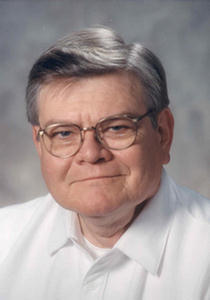
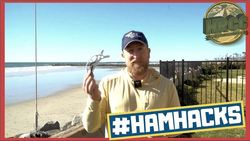
.jpg) advancements in voting processes since then have made electronic balloting worth a second look.
advancements in voting processes since then have made electronic balloting worth a second look.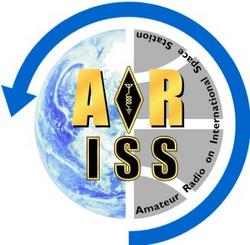 installed 11 years ago was replaced with another built by the European Space Agency (ESA) and Airbus. It included two additional RF connectors to support the
installed 11 years ago was replaced with another built by the European Space Agency (ESA) and Airbus. It included two additional RF connectors to support the .jpg) The latest episode of the On the Air podcast (Episode 13) features a discussion with Curt Laumann, K7ZOO, about his success in boosting activity at the University of Arizona amateur radio club.
The latest episode of the On the Air podcast (Episode 13) features a discussion with Curt Laumann, K7ZOO, about his success in boosting activity at the University of Arizona amateur radio club..jpg) discusses synchronous AM reception and includes an interview with Dave Tipping, NZ1J, about a novel approach to boost foxhunt participation.
discusses synchronous AM reception and includes an interview with Dave Tipping, NZ1J, about a novel approach to boost foxhunt participation..png) could detect their own or other signals in recent passes today," AMSAT said in a January 28 bulletin. "Please do not attempt to transmit through the transponder until further notice. This is very important to the next steps we are taking now."
could detect their own or other signals in recent passes today," AMSAT said in a January 28 bulletin. "Please do not attempt to transmit through the transponder until further notice. This is very important to the next steps we are taking now."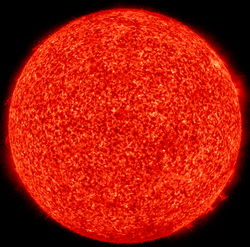 this week. Average daily solar flux dropped from 77.2 to 74.2.
this week. Average daily solar flux dropped from 77.2 to 74.2..JPG) explained, FT8 "was explicitly designed" for making contacts during weak, multi-hop, sporadic-E openings on 6 meters.
explained, FT8 "was explicitly designed" for making contacts during weak, multi-hop, sporadic-E openings on 6 meters.(1).jpg) "There is no reason why additional slices should not be used when over-occupancy requires it," he told ARRL. "We don't attempt to dictate such usage patterns; band planning is best done by committees created for that purpose."
"There is no reason why additional slices should not be used when over-occupancy requires it," he told ARRL. "We don't attempt to dictate such usage patterns; band planning is best done by committees created for that purpose." stories about how amateurs involved in SKYWARN have saved lives and property, and why this is an important amateur radio activity.
stories about how amateurs involved in SKYWARN have saved lives and property, and why this is an important amateur radio activity. travel and logistics, and the associated health risks to the expedition team." RMST's primary source of revenue comes from its exhibits of its vast collection of Titanic relics, which have been closed or seen only limited attendance due to virus-related restrictions.
travel and logistics, and the associated health risks to the expedition team." RMST's primary source of revenue comes from its exhibits of its vast collection of Titanic relics, which have been closed or seen only limited attendance due to virus-related restrictions..jpg)
.JPG) Students at Seton Hall Prep in West Orange, New Jersey,
Students at Seton Hall Prep in West Orange, New Jersey, .jpg) Extra-Class Question Pool because question E6B06 has two correct answer choices, and E1C05 has an inaccurate question.
Extra-Class Question Pool because question E6B06 has two correct answer choices, and E1C05 has an inaccurate question.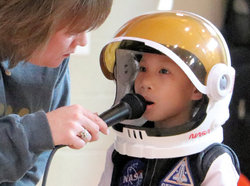 radio contacts are approximately 10 minutes long and in a question-and-answer format.
radio contacts are approximately 10 minutes long and in a question-and-answer format.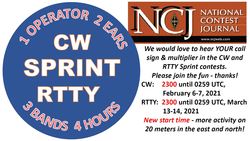 Organizers of the NCJ-Sponsored North American Sprint (CW and RTTY) have leveraged the US Postal Service to drum up participation. "Some 'friends of sprint' have mailed postcards to stations in rare multipliers on occasion in the past," said Ward Silver, N0AX. He located a print-and-mail service that would send promotional cards to a list of addresses the contest sponsors compiled. "I was hoping it would get noticed [and] I guess it did!" Silver said. "There are a lot of short contests these days, so we need to remind folks of the sprints that started it all!" The mailing list was modified from a list of call signs that included past sprinters and participants in the ARRL November Sweepstakes (CW) and the North American QSO Party (NAQP), also sponsored by NCJ. The postcard calls attention to the earlier 2300 UTC start times for the February 6 - 7 CW and March 13 - 14 RTTY sprints. First-time sprinters would be wise to
Organizers of the NCJ-Sponsored North American Sprint (CW and RTTY) have leveraged the US Postal Service to drum up participation. "Some 'friends of sprint' have mailed postcards to stations in rare multipliers on occasion in the past," said Ward Silver, N0AX. He located a print-and-mail service that would send promotional cards to a list of addresses the contest sponsors compiled. "I was hoping it would get noticed [and] I guess it did!" Silver said. "There are a lot of short contests these days, so we need to remind folks of the sprints that started it all!" The mailing list was modified from a list of call signs that included past sprinters and participants in the ARRL November Sweepstakes (CW) and the North American QSO Party (NAQP), also sponsored by NCJ. The postcard calls attention to the earlier 2300 UTC start times for the February 6 - 7 CW and March 13 - 14 RTTY sprints. First-time sprinters would be wise to .JPG) IARU has received the gift of the hamradio.org domain. Andrew J. Wolfram, KI7RYC, has donated the hamradio.org domain to the International Amateur Radio Union (IARU) for non-profit educational use to promote the amateur and amateur satellite services. In accepting this gift, IARU President Tim Ellam, VE6SH, said, "The hamradio.org domain offers a unique opportunity for which we are deeply grateful to Andrew. It is our intention to develop a website that can serve as a focal point for anyone, anywhere, who may be seeking information on amateur radio, which is better known as 'ham radio' by the general public." The IARU is the global federation of national amateur radio organizations with member-societies in more than 160 countries and separate territories. Since its founding in 1925, the IARU has successfully defended and expanded access to the radio spectrum by radio amateurs internationally.
IARU has received the gift of the hamradio.org domain. Andrew J. Wolfram, KI7RYC, has donated the hamradio.org domain to the International Amateur Radio Union (IARU) for non-profit educational use to promote the amateur and amateur satellite services. In accepting this gift, IARU President Tim Ellam, VE6SH, said, "The hamradio.org domain offers a unique opportunity for which we are deeply grateful to Andrew. It is our intention to develop a website that can serve as a focal point for anyone, anywhere, who may be seeking information on amateur radio, which is better known as 'ham radio' by the general public." The IARU is the global federation of national amateur radio organizations with member-societies in more than 160 countries and separate territories. Since its founding in 1925, the IARU has successfully defended and expanded access to the radio spectrum by radio amateurs internationally.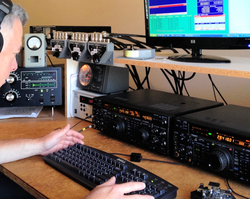
.jpg)








